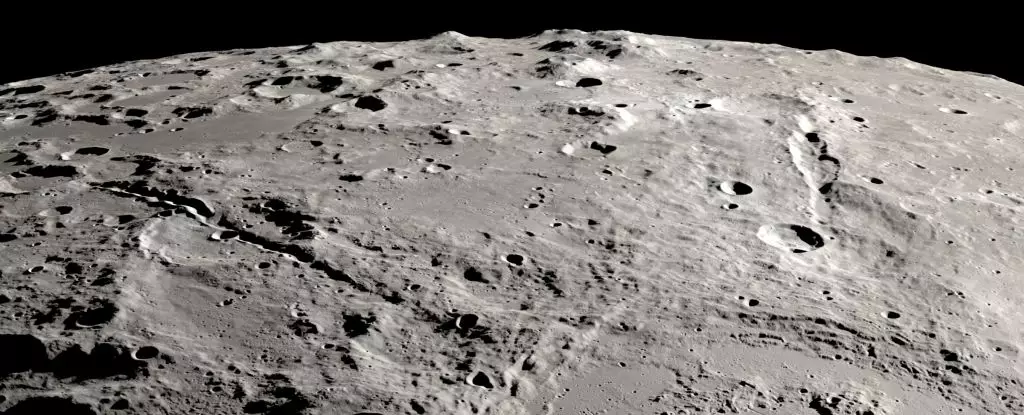While Arizona’s Grand Canyon represents a marvel of geological history shaped meticulously over millions of years by the Colorado River, the universe is filled with fascinating formations that share similar traits. Among these is the Moon, which possesses impressive canyon-like structures that pique the interest of planetary scientists. Recent studies have shed light on how these lunar canyons, particularly Vallis Schrödinger and Vallis Planck, came into existence rapidly following a cataclysmic impact event, contrasting starkly with the slower processes observed on Earth.
Located on the far side of the Moon, closer to its south pole, Vallis Schrödinger and Vallis Planck extend their immense lengths across the lunar surface. The former measures about 270 kilometers (168 miles) in length and reaches depths of up to 2.7 kilometers, while Vallis Planck is slightly longer at 280 kilometers and deeper at 3.5 kilometers. These dimensions, although impressive in their own right, highlight the Moon’s unique geophysical history when compared to terrestrial landmarks. Earth’s Grand Canyon, at 446 kilometers long and 1.86 kilometers deep, while vast, pales in comparison to the depths of these lunar canyons.
The genesis of such formations raises intriguing questions about the processes that led to their structure. Unlike Earth—where water played a pivotal role in shaping landscapes—the Moon lacks liquid water, making it essential to explore alternative theories of canyon formation.
Recent research led by David Kring and his team at the US Lunar and Planetary Institute has provided groundbreaking insights into the formation of Vallis Schrödinger and Vallis Planck. The scientists undertook a comprehensive analysis of the Moon’s surface by examining images to create detailed maps outlining the distribution and trajectory of ejecta—material expelled during the impact that birthed the Schrödinger crater.
Their findings revealed that the impact itself was asymmetric, resulting in a significant majority of ejecta being thrown outward from the Moon’s south pole. This data allowed researchers to engage in “reverse engineering” the impact process, ultimately revealing that material ejected during the event traveled at astonishing speeds, falling between 0.95 and 1.28 kilometers per second. Given the estimated energy required for this event, researchers noted that it surpassed the total energy capacity of all global nuclear arsenals combined by a factor of 130.
NASA’s upcoming Artemis III lunar mission aims to explore the lunar south pole, an area that will not only facilitate the collection of crucial data but also enhance our understanding of lunar geology. Although the Schrödinger impact occurred approximately 3.8 billion years ago, when large projectiles were more frequent in the solar system, concerns about the dangers posed by past impacts for current missions appear minimal.
The extensive mapping and modeling efforts suggest that most of the impact ejecta lies away from potential Artemis landing sites. This favorable arrangement is set to provide astronauts with access to older and deeper lunar materials, enhancing opportunities for geological studies and exploration.
As we prepare for the next era of lunar exploration through the Artemis program, the study of the Vallis Schrödinger and Vallis Planck canyons serves as a reminder of the dynamic processes that shape not only our planet but also celestial bodies within our solar system. The implications of this research promise to provide insights into the Moon’s history and evolutionary processes, aiding humanity in understanding not only the Moon but the universe at large. The discoveries awaiting the Artemis crew in 2027 could not only deepen our knowledge of lunar geology but enable us to draw parallels with Earth’s own storied past, enhancing the narrative of our cosmic collaboration with the Moon.

